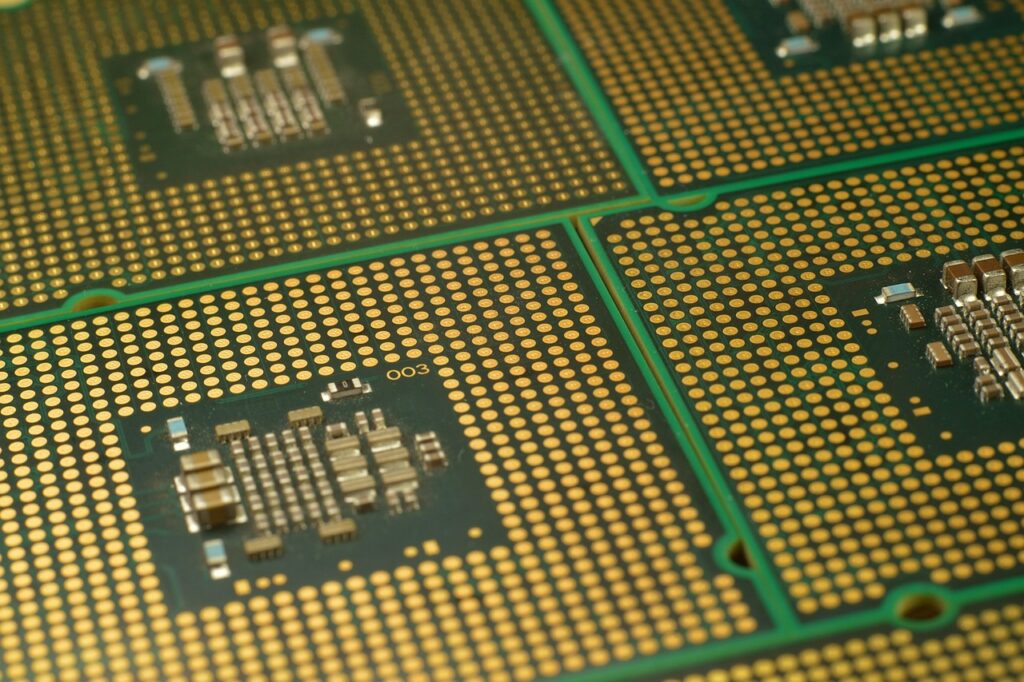Global Avionics Round-Up from Aircraft Value News (AVN)

A shortage of microchips afflicts the avionics industry worldwide. The emerging multilateral trade war will only make the problem worse.
The commercial aviation avionics industry faces a host of challenges, but arguably one of the worst crises afflicting it today is the shortage of semiconductors and critical electronic components.
This crisis, exacerbated by a confluence of global supply chain disruptions, rising geopolitical tensions, and surging demand, has deeply impacted the production and delivery of advanced avionics systems, threatening the efficiency and safety of modern aircraft.
The trade war that the Trump administration has promised to initiate will only exacerbate the problem.
A Global Semiconductor Shortage
Semiconductors are the backbone of avionics, powering everything from navigation and communication systems to flight management and cockpit displays. The global semiconductor shortage, which initially emerged during the COVID-19 pandemic, has persisted far longer than anticipated.
While other industries, such as automotive and consumer electronics, have managed to recover or adapt, the aviation industry faces unique challenges. Avionics systems require highly specialized and rigorously certified components that can’t be substituted with off-the-shelf chips. The stringent certification processes and the high reliability standards mandated by aviation authorities significantly limit the industry’s flexibility in sourcing alternatives.
Supply Chain Disruptions
Supply chain disruptions are compounding the semiconductor shortage. The pandemic caused major disruptions in global manufacturing and logistics networks, many of which have not fully recovered. Lockdowns in key manufacturing hubs, combined with port backlogs and transportation bottlenecks, have slowed the delivery of essential components.
Moreover, the ongoing Russia-Ukraine conflict has disrupted the supply of critical raw materials like neon gas and palladium, both of which are essential for semiconductor production. This has further constrained the availability of components needed for avionics manufacturing.
Rising Demand for Avionics
The chip challenge is exacerbated by the growing demand for advanced avionics. As airlines transition to next-generation aircraft to meet sustainability goals, the demand for fuel-efficient planes equipped with state-of-the-art avionics has surged. Moreover, the increasing emphasis on autonomous flight technologies and enhanced safety systems has further driven the need for more sophisticated electronic components. The widening gap between demand and supply has created backlogs and delayed aircraft deliveries, leading to higher costs for airlines.
Impact on Aircraft Production and Safety
These developments have exerted a ripple effect on aircraft production timelines. Major manufacturers like Boeing and Airbus have reported delays in delivering aircraft due to shortages of critical avionics components. This not only impacts airline operations but also has broader implications for the global aviation ecosystem, including leasing companies, maintenance providers, and passengers.
Safety concerns are another critical dimension of this crisis. The inability to source certified components can lead to delays in replacing aging avionics systems in existing aircraft, potentially compromising safety. While manufacturers and regulators are unlikely to compromise on safety standards, the extended timelines required to address these issues pose challenges for fleet reliability and performance.
Potential Solutions and Industry Response
To mitigate the crisis, industry stakeholders are exploring multiple strategies. Aircraft manufacturers and avionics suppliers are working to diversify their supply chains, seeking partnerships with new semiconductor manufacturers and investing in local production capabilities.
Governments are also stepping in to address the semiconductor shortage by offering incentives for domestic chip manufacturing and fostering public-private partnerships. The industry is pushing for more streamlined certification processes to accelerate the approval of alternative components without compromising safety.
The semiconductor and avionics component shortage represents a threat to the commercial aviation industry, impeding progress toward more efficient and technologically advanced aircraft. The good news is, efforts are underway in 2025 among manufacturers, suppliers, and regulators to address these challenges.
This article also appears in our partner publication Aircraft Value News.
John Persinos is the editor-in-chief of Aircraft Value News. You can reach John at: [email protected]